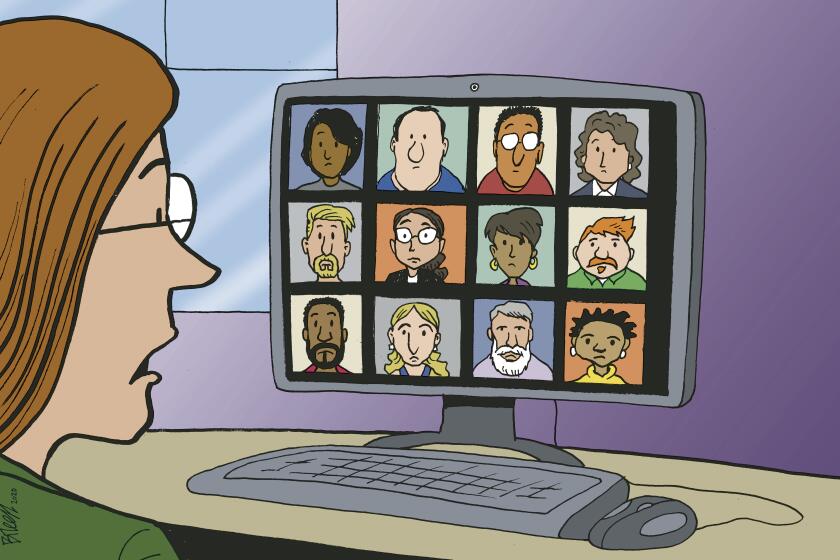Zoom bets on new features in a bid to dominate videoconferencing

- Share via
Zoom Video Communications is adding word processing to its suite of tools and experimenting with novel features for meetings as it faces steep competition from Microsoft Corp.’s Teams.
Collaborative document editing, similar to Alphabet’s Google Docs, will be made available in Zoom next year, the company announced Tuesday ahead of its annual conference. What sets the tool apart is the ability to include information and artificial intelligence-generated summaries from Zoom meetings, Chief Product Officer Smita Hashim said in an interview.
The company’s fiscal year revenue jumped more than fivefold to $4.1 billion from 2020 to 2022 as Zoom became an essential tool during the pandemic. But that explosive growth ended as offices reopened and competition intensified. Analysts now expect sales to increase less than 2% in the coming quarters. Zoom’s strategy to revive growth is based on providing a wider suite of business tools beyond video meetings, including features from Workvivo, an employee communication service it agreed to acquire in April.
Zoom has seen early success with its office phone service, which is now making about $500 million per year, and its customer service center offering, which passed 500 clients. Morgan Stanley analyst Meta Marshall called these “encouraging stats.” The company isn’t yet disclosing usage numbers for other tools such as email and calendar, which it introduced last year.
Still, Microsoft’s Teams is a formidable rival. Zoom has met with regulators from the U.S. and European Union over the last year to express concerns about the way Microsoft, the world’s largest software maker, gives preference to its product through design and price bundling. Zoom Chief Executive Eric Yuan said in September that U.S. regulators should review the issue as well.
Zoom Video Communications, a one-time darling of the work-from-home era, is calling workers back to the office.
Zoom executives — and many financial analysts — say most people simply like using its videoconferencing app better than Teams. But Zoom controlled only about 7% of the market for communication and collaboration software as of the first quarter of the year, while Microsoft topped 42%, according to industry analyst IDC.
“The quality of Zoom is just incredible — it is just heads and shoulders above anyone else,” Hashim said. She added that although many customers have licenses for multiple videoconferencing solutions, they heavily use Zoom.
To keep that edge, the company is experimenting with some novel features, according to recent patent filings. One patent granted this year shows Zoom is working on adding interactive virtual objects into meetings for uses such as product advertisement or education. Another recent patent shows a feature that scans the “nonverbal cues” of meeting participants and gives prompts such as suggesting calling on someone who looks like they want to talk. “There’s a lot of technical innovation that happens,” Hashim said of Zoom’s research teams, while declining to comment on specific filings.
In September, Zoom introduced AI features, such as call summarization and message drafting. The new tools are included in paid plans at no additional cost. Hashim said this is not promotional pricing, and the company is committed to keeping the AI features free for users.
“We are beginning to see that customer interest and customer adoption continues to go up,” Hashim said of Zoom’s new non-meetings tools. “The focus right now is bringing more and more value to customers through these kind of cross-product journeys.”
Turns out, there’s scientific literature to support why we find videoconferencing so draining.
More to Read
Inside the business of entertainment
The Wide Shot brings you news, analysis and insights on everything from streaming wars to production — and what it all means for the future.
You may occasionally receive promotional content from the Los Angeles Times.












